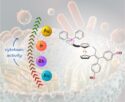Arguably, innovation is endemic in all areas of science, but the concept of open innovation—sharing ideas and an absence of barriers to collaboration and cooperation—is a relatively alien concept to any industry. Open innovation is a term that has been around for more than a decade, and the concept it describes is at least 50 years old. Recently, however, this idea has gained significant ground in the healthcare sector, driven by increasing attrition rates and escalating R&D costs in the pharmaceutical industry. With blockbuster drugs falling off the patent cliff and a lack of new molecular entities (NMEs) coming through the pipeline to take their place, innovation is being hailed as the key element that must return in order to drive future success.
Sanofi, Paris, France, held a one-day forum on February 12, 2013, on the topic of Open Innovation at the European Molecular Biology Laboratory (EMBL) Advanced Training Center in Heidelberg, Germany, giving senior Sanofi management the opportunity to meet with their partners. The opening address was given by the Head of Global R&D, Elias Zerhouni, who spoke of the decrease in R&D productivity, the challenges created by chronic illness, and the issue of low predictability in humans. This was followed by two sessions in which Sanofi’s partners had the opportunity to showcase their innovative products and ideas.
Data for Life and Personalized Medicine
The first session, entitled Data for Life, discussed the need to manage, collate, and analyze the vast amount of preclinical and clinical data that is out there. It was a session that turned my mind to the 1997 movie Gattaca, in which the concept of personalized medicine is extrapolated to the extremes.
The first presentation, given by Rolf Porsche of Porschehealth, Pöcking, Germany, described the need for IT solutions to personalized medicine problems. The idea is that a physician at the bedside should be able to call up not only the clinical history and notes for a given patient, but also perform on-the-spot analysis of a patient group, identifying the best treatment course for the patient based on his or her individual needs.
A later presentation exemplified this exact concept, showing an iPad app called the Hana Oncolyzer. The presentation from Matthieu-P. Schapranow and Christian Regenbrecht demonstrated the power of the tool developed in collaboration between the Charité—Universitätsmedizin, Berlin, Germany, and the Hasso Plattner Institute, Potsdam-Babelsberg, Germany. The app could potentially take the burden off the physician in tracking appropriate patients for trials, etc., with push notifications indicating when a suitable patient with a particular requirement is admitted. While currently focused on cancer patients at the Charité, there was clear scope for expansion to other indications and beyond single institutes and even beyond geographical borders.
Bringing the Bench to the Bedside
The second session, entitled Translatability into Man, addressed the issue of poor predictability, the need to bring the bench to the bedside, and the imperative of moving away from the “me too” style of drug design. In his opening address at the beginning of the day, Elias Zerhouni touched on the issue that through the advent of mice models (knock-outs etc.), scientists have shied away from collecting data from human subjects.
Kicking off the session was Jan Korbel from EMBL describing his group’s work on identifying genetic markers in cancer and how through understanding the underlying genetic mechanisms causing the onset or progression of disease, a patient can be better medicated, leading to improved prognosis.
Peter Seeberger, Max Planck Institute of Colloids and Interfaces, Potsdam, Germany, was up next to describe the cutting-edge concept of synthetic vaccines, moving away from the traditional use of carrier proteins conjugated to a polysaccharide via a linker to an oligosaccharide. Finally, Ingmar Hoerr from CureVac, Tübingen, Germany, presented mRNA-based therapeutics as a next generation of drugs.
The talks of both sessions highlighted the innovative concepts and research avenues under investigation. The goal of collaborating in a symbiotic fashion to ensure a productive pharma ecosystem was apparent from the attitudes of both the Sanofi executives and partners alike. Certainly, and as it should be, the patients stand to gain most from this shift in paradigm.
Dr. Natalia Ortúzar is Editor-in-Chief of the journal ChemMedChem.
Also of interest:
- “Collaborative Innovation”—Regaining the Edge in Drug Discovery,
Hanno Wild, Christoph Huwe, Monika Lessl,
Angew. Chem. Int. Ed. 2013.
DOI: 10.1002/anie.201208734




